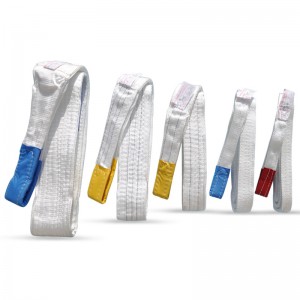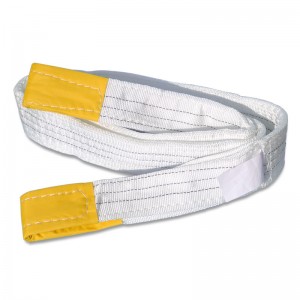For highly finished parts or delicate equipment, nothing beats the flexibility, strength, and support that synthetic lifting slings can provide. Synthetic slings can be made from nylon or polyester materials and are lightweight, easy to rig, and extremely flexible. They’re extremely popular in construction and other general industries because they’re fairly inexpensive, come in a variety of standard sizes, and can be replaced easily.
Because they’re so flexible, they can mold to the shape of delicate and irregularly-shaped loads, or be used in a choker hitch to securely grip loads of round bar stock or tubes. The soft materials they’re made from are strong enough to lift heavy loads, but will protect expensive and delicate loads from scratches and crushing. Synthetic slings are extremely versatile, can be used in vertical, choker, and basket hitches and have a Design Factor of 5:1, meaning the breaking strength of the sling is five times higher than the rated Working Load Limit.
Because they’re made of non-sparking and non-conductive fibers, they can be used in explosive atmospheres. However, they’re also more susceptible to cuts, tears, abrasions. Exposure to heat, chemicals, and UV rays can also cause damage and weaken the strength and integrity of the sling.
In most cases, synthetic slings cannot be repaired, so any evidence of damage is cause for removal from service. Best practice is to destroy and dispose of damaged synthetic slings to prevent further use.
Post time: Mar-08-2022






